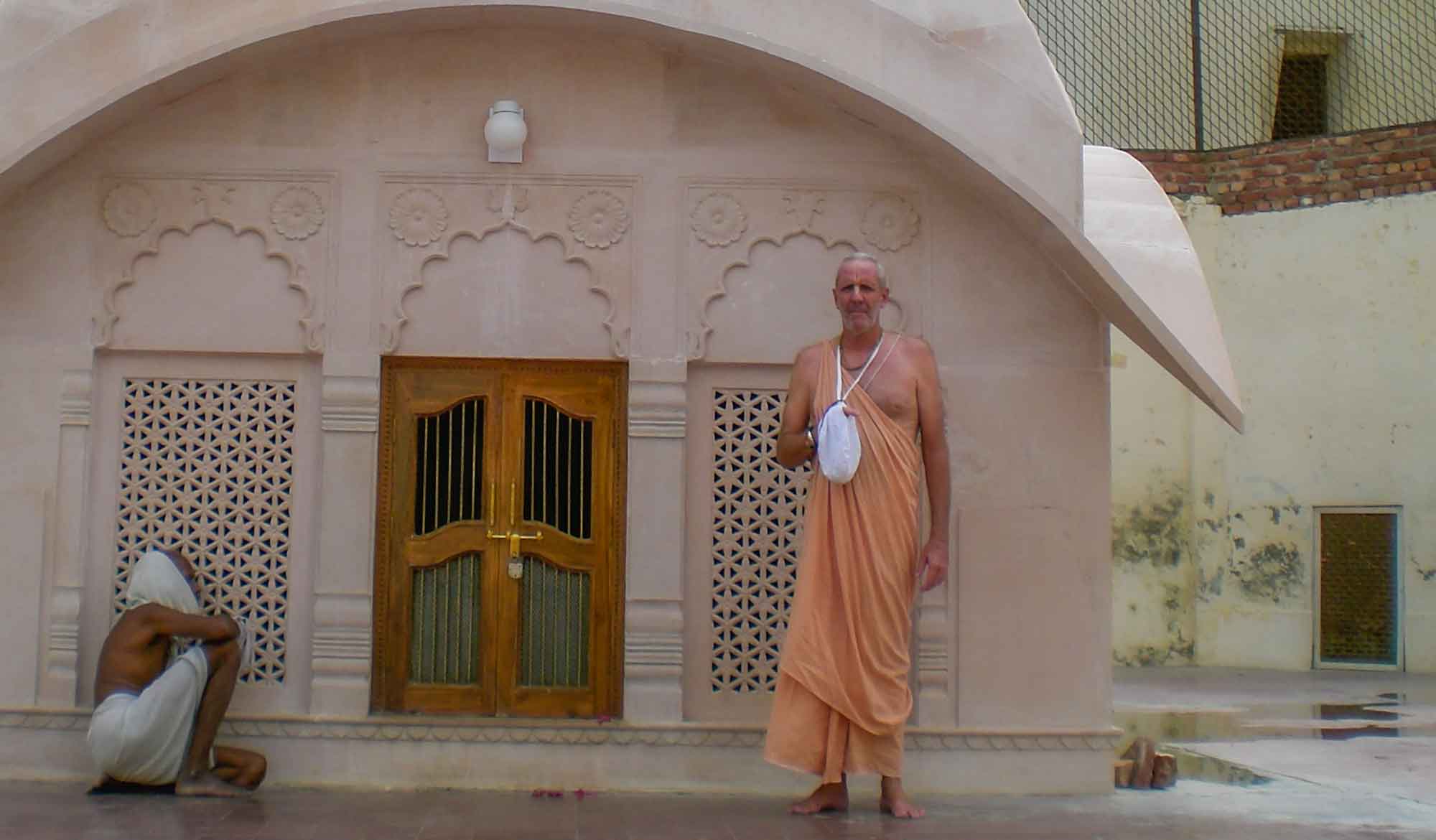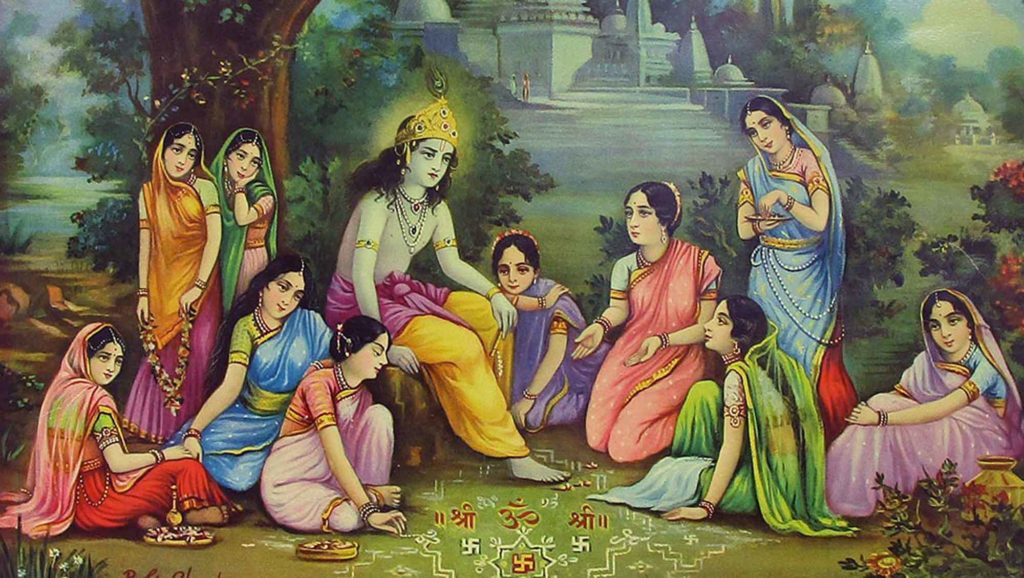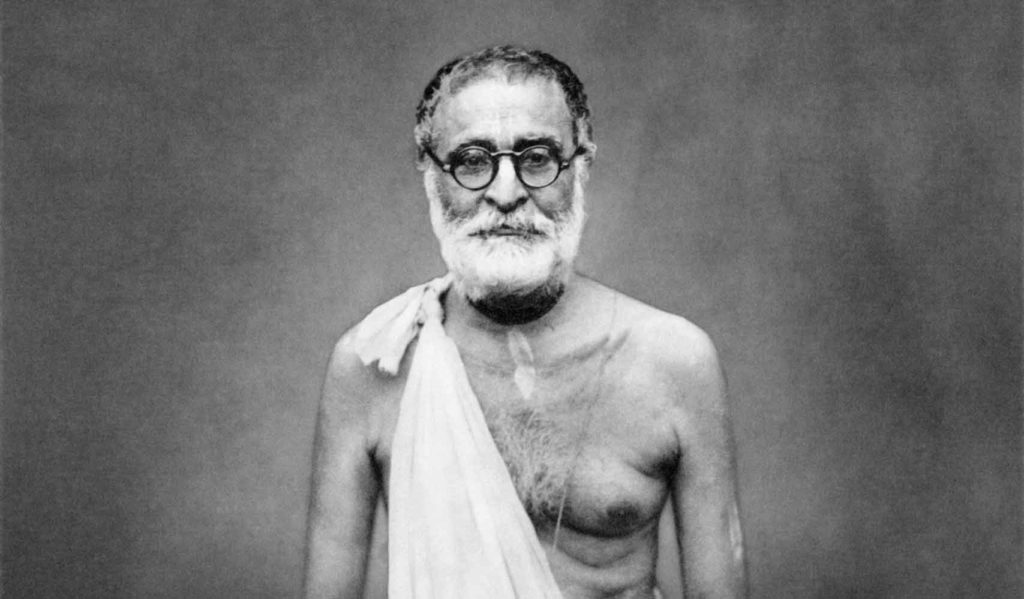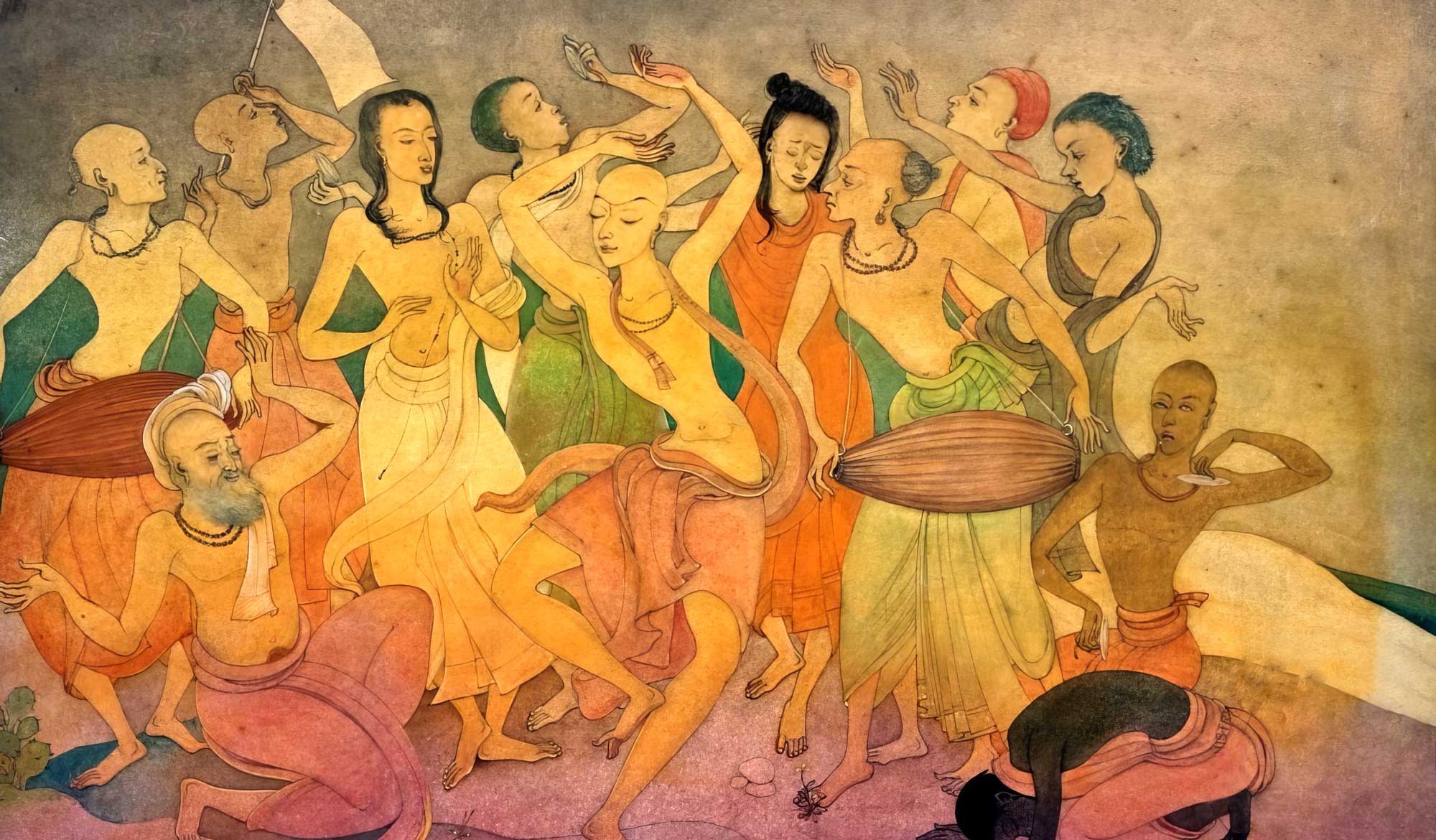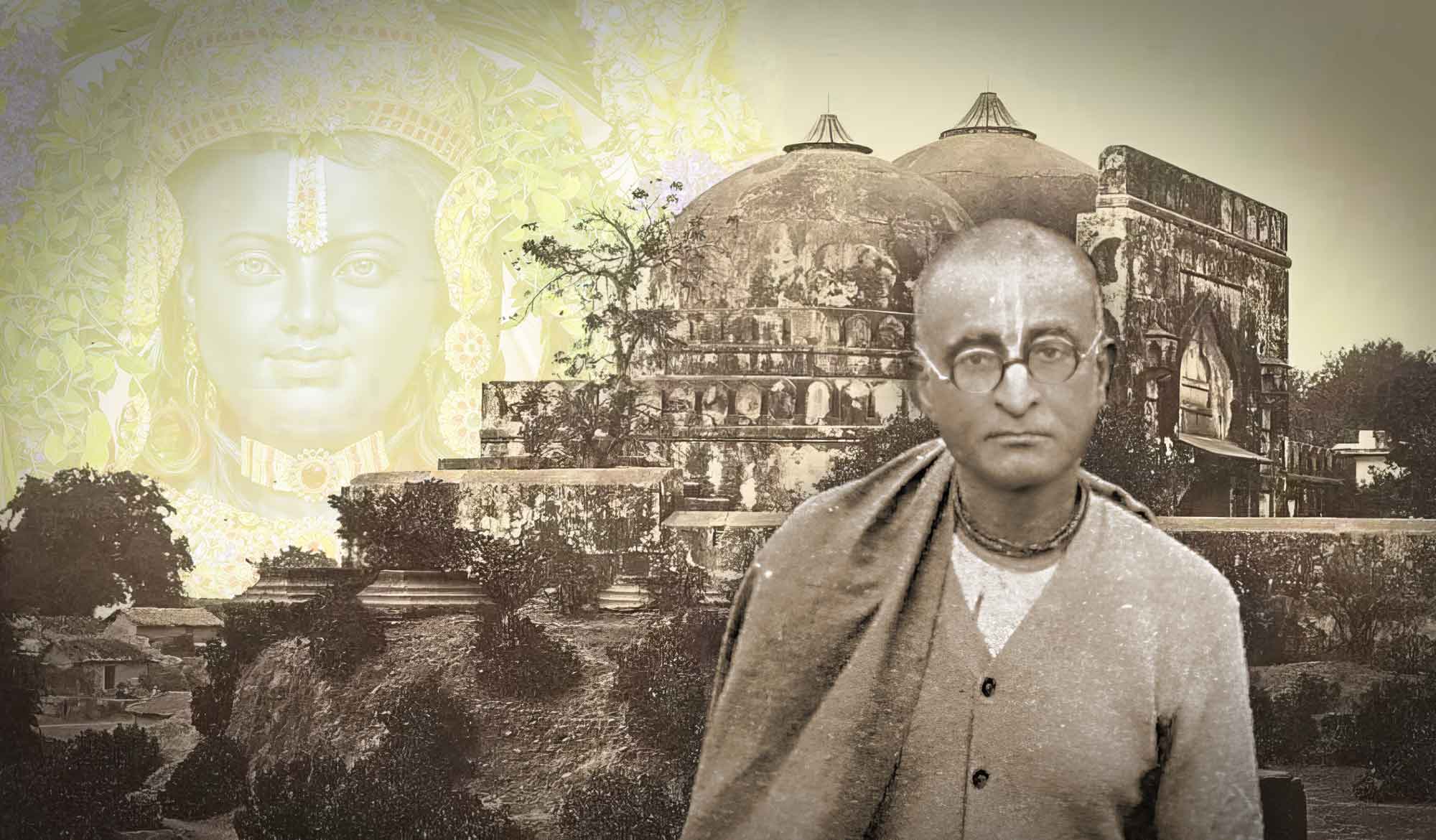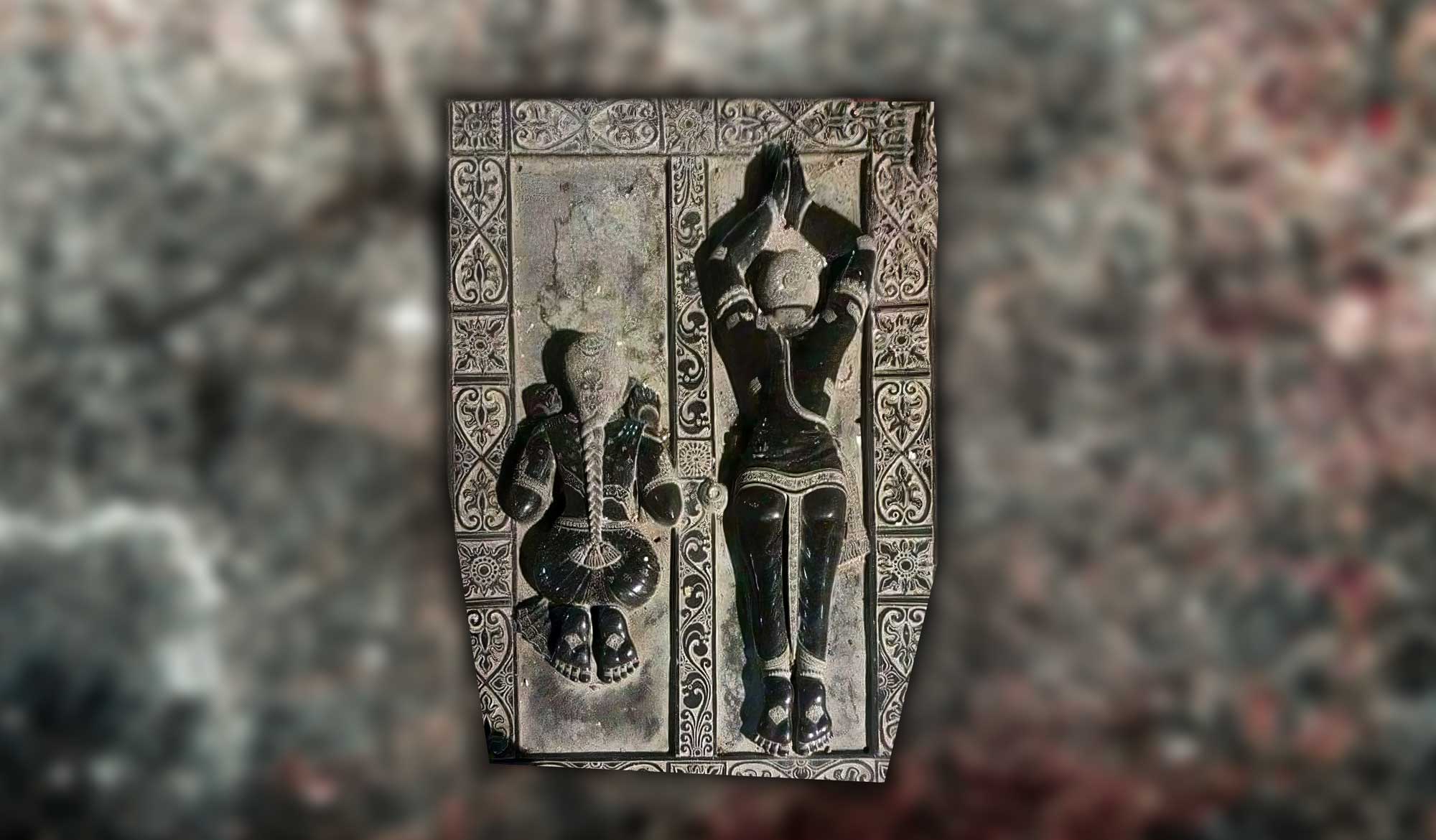Overview
In this article ‘Ācāryas at Śrī Śrī Rādhā-Dāmodara Temple, Vṛndāvana’ from KṛṣṇaTalk, 2014, Śrīla Narasiṅgha Mahārāja explains the importance of Śrī Śrī Radhā-Dāmodara Temple in regards to the various ācāryas who resided there, including Śrīla A.C. Bhaktivedānta Svāmī Prabhupāda.
“Those who stay there (Rādhā-Dāmodara Temple) will realise that those ācāryas (Śrī Rūpa, Jīva, etc.) are still living there. And if one is actually advancing in the spiritual field, they can still take instruction from the ācāryas living there. It is up to the individual, how he realises this by his devotional service. By staying there, you must realise how pure the environment is. The environment itself gives a high taste of consciousness. Rādhā-Dāmodara is there and the great ācāryas’ samādhis are there. There cannot be any other better place to live than at Rādhā-Dāmodara. This corner at the Rādhā-Dāmodara temple is just like the hub of the wheel of the spiritual world — it is the centre”
The above statement is by no means an exaggeration, a concoction or a speculation. It is indeed a paraphrased statement based on the deep realisations of Śrīla AC Bhaktivedānta Svāmī Prabhupāda as expressed to his intimate disciple Kṣīrodakaśāyī Viṣṇu, circa 1972.
Kṣīrodakaśāyī Viṣṇu (later known as Bhakti Kṣīrodakaśāyī Viṣṇu Mahārāja) was also a close friend and godbrother of mine, and on not less than three occasions he expressed the above to me during our conversations about Śrīla Prabhupāda and Prabhupāda’s rooms at the Rādhā-Dāmodara Temple as what Prabhupāda had spoken to him personally.
Śrī Śrī Rādhā-Dāmodara Temple occupies a place near and dear in the hearts of all Gauḍīya Vaiṣṇavas. The temple is the residence of Śrī Śrī Rādhā-Dāmodara vigraha, the place of bhajana and samādhi of Śrī Jīva Gosvāmī and Śrī Rupa Gosvāmī, the samādhi of Bhūgarbha Gosvāmī and puṣpa-samādhis of numerous other Vaiṣṇavas in the paramparā of Śrī Rūpa Gosvāmī Prabhupāda.
The compound of Śrī Śrī Rādhā-Dāmodara Temple also houses the residence and bhajana-kuṭīra of Śrīla Prabhupāda who has also stated, “I live eternally in my rooms at Rādhā-Dāmodara.”
No doubt these are deep and revealing statements by Śrīla Prabhupāda that will charm and enthuse the hearts of all his sincere followers and disciples. Contrary to the beliefs and speculations of some narrow-minded and unrealised persons, these statements are true to the smallest detail and can be experienced by those that approach the Super Subjective Reality at the Śrī Śrī Rādhā-Dāmodara Temple with śraddhā and śaraṇāgati.
We are also happy to mention that the members and sannyāsīs of our humble mission [Śrī Narasiṅgha Caitanya Āśrama/Śrī Rūpānuga Bhajana Āśrama] also have their place of bhajana and service at the Śrī Śrī Rādhā-Dāmodara Temple by the grace of Śrīla Prabhupāda and our revered ācāryas, Śrī Rūpa and Śrī Jīva.
As the holy śloka says:
śravaṇam kīrtanam dāmodara-bhajanam
scubbanam moppanam dāmodara-sevanam
“Hearing and chanting the glories of Śrī Śrī Rādhā-Dāmodara is our bhajana. Scrubbing and mopping is our service.” (Śrī Narasiṅgha-Saṁhitā)
Prema Dhāma Deva Stotram with the Narasiṅgha Sevaka Commentary – Verses 61-65
In verses 61 to 65 of 'Prema Dhāma Deva Stotram', Śrīla Śrīdhara Mahārāja narrates the pastime of Śrī Caitanya at Caṭaka Parvata In Purī and explains how the scriptures produced by Brahmā and Śiva are ultimately searching for the personality of Mahāprabhu who is merciful too all jīvas, no matter what their social position.
Prabhupāda Śrīla Sarasvatī Ṭhākura’s Visit to Ayodhyā
With the forthcoming observance of Śrī Rāma Navamī, we present 'Prabhupāda Śrīla Sarasvatī Ṭhākura’s Visit to Ayodhyā' written by Śrīla Bhaktisiddhānta Sarasvatī Ṭhākura Prabhupāda from The Gaudīyā magazine, Vol 3. Issue 21/ In December 1924, after visiting Benares and Prāyāga, Sarasvatī Ṭhākura visited the birth-site of Śrī Rāmācandra in Ayodhyā.
Śaraṇāgati – The Only Path to Auspiciousness
In this article, 'Śaraṇāgati - The Only Path to Auspiciousness', Dhīra Lalitā Dāsī analyses the process of śaraṇāgati (surrender) beginning with śraddhā (faith). She also discusses the role of śāstra and the Vaiṣṇava in connection with surrender.
Ātma Samīkṣā – The Value of Introspection
In this article, "Ātma Samīkṣā – The Value of Introspection" Kalki Dāsa highlights the importance of introspection in the life of a devotee and especially in relation to the worldly environment that surrounds us. He also explains how transcendental sound influences our capacity to introspect.
Prema Dhāma Deva Stotram with the Narasiṅgha Sevaka Commentary – Verses 61-65
In verses 61 to 65 of 'Prema Dhāma Deva Stotram', Śrīla Śrīdhara Mahārāja narrates the pastime of Śrī Caitanya at Caṭaka Parvata In Purī and explains how the scriptures produced by Brahmā and Śiva are ultimately searching for the personality of Mahāprabhu who is merciful too all jīvas, no matter what their social position.
Prabhupāda Śrīla Sarasvatī Ṭhākura’s Visit to Ayodhyā
With the forthcoming observance of Śrī Rāma Navamī, we present 'Prabhupāda Śrīla Sarasvatī Ṭhākura’s Visit to Ayodhyā' written by Śrīla Bhaktisiddhānta Sarasvatī Ṭhākura Prabhupāda from The Gaudīyā magazine, Vol 3. Issue 21/ In December 1924, after visiting Benares and Prāyāga, Sarasvatī Ṭhākura visited the birth-site of Śrī Rāmācandra in Ayodhyā.
Śaraṇāgati – The Only Path to Auspiciousness
In this article, 'Śaraṇāgati - The Only Path to Auspiciousness', Dhīra Lalitā Dāsī analyses the process of śaraṇāgati (surrender) beginning with śraddhā (faith). She also discusses the role of śāstra and the Vaiṣṇava in connection with surrender.
Ātma Samīkṣā – The Value of Introspection
In this article, "Ātma Samīkṣā – The Value of Introspection" Kalki Dāsa highlights the importance of introspection in the life of a devotee and especially in relation to the worldly environment that surrounds us. He also explains how transcendental sound influences our capacity to introspect.


